To all those we are indebted to
إلى كلِّ الذين نحن مَدينون لهم

Alia Al-Sabi and Amany Khalifa take apart Palestinian ‘return’ through a conversation that unfolds across literary, temporal, and spacial registers. Amr Amer and Laura al-Tibi weave together song and critical analysis, unsettling colonial conceptions of Palestinians’ relation to their land economically and existentially. Basel Abbas and Ruanne Abou-Rahme offer a comprehensive hypothesis of the “negative,” unfolding across poetry, images, and illustration. Adam HajYahia and Haitham Haddad formulate an aesthetic theory of revolt, examined through text, images, and illustration. By focusing on the interplay between text and artistic form, “To all those we are indebted to” proposes new methods of thinking and creating, aesthetically and politically.
"إلى كلِّ الذين نحن مَدينون لهم" هي سلسلة مكونة من أربع كتيّبات التي تطرح مناقشات بصريّة، شعريّة، ونقديّة لمفهوم سياسة "الرفض" في السياق الفلسطيني. تم إنتاج كل كتيّب من خلال تعاون ثنائي بين فنانين/ات وكتّاب لاستكشاف وتطوير طرق متجددة للرفض وإنتاج المعرفة عبر إيماءات تدمج ما بين التحليل السياسي والسرد الجماليّ.
عالية السبع وأماني خليفة تقومان بتفكيك "عودة" الفلسطينيّين من خلال محادثةٍ تتكشَّف عبر دفاتر الأدب، والزمان والمكان. عمرو عامر ولورا الطيبي ينسجان معاً الأغنية والتحليل النقدي، ليخلخلا المفاهيم الاستعماريّة لعلاقةِ الفلسطينيّين بأرضهم اقتصادياًّ ووجودياًّ. باسل عباس وروان أبو رحمة يقدّمان فرضيّةً شاملةً عن "الناقص"، الذي يتجلّى في الشعر، والصورة والشكل. آدم حاج يحيى وهيثم حداد يصيغان نظريّة جماليّة للثورة، يقومان ببحثِها من خلال النص، والصورة والشكل. من خلال التركيز على التفاعل بين النصِّ والشكل الفني، يقترحُ "إلى كلِّ الذين نحن مَدينون لهم" أساليبَ جديدة للتفكير والإبداع جمالياًّ وسياسياًّ.
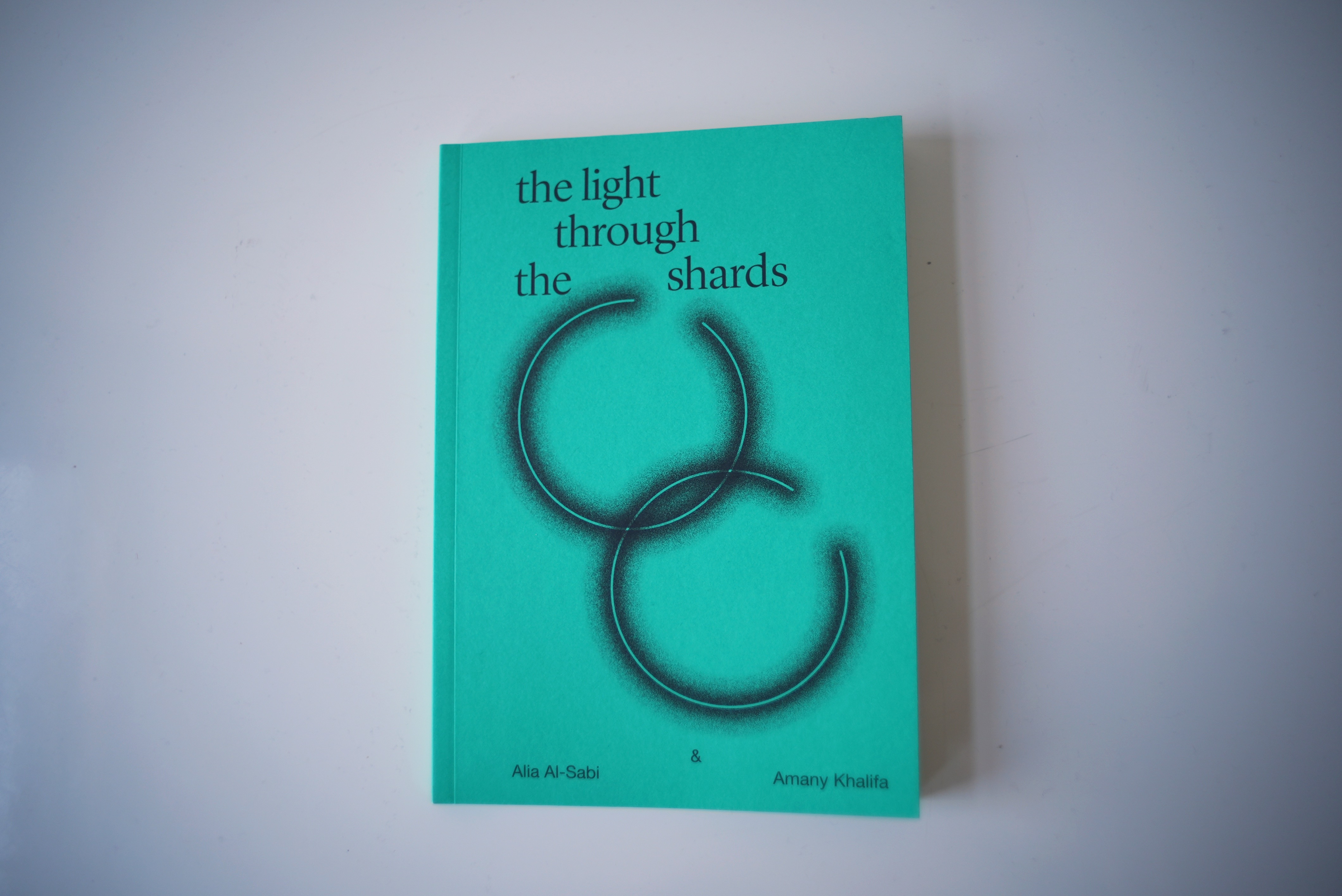



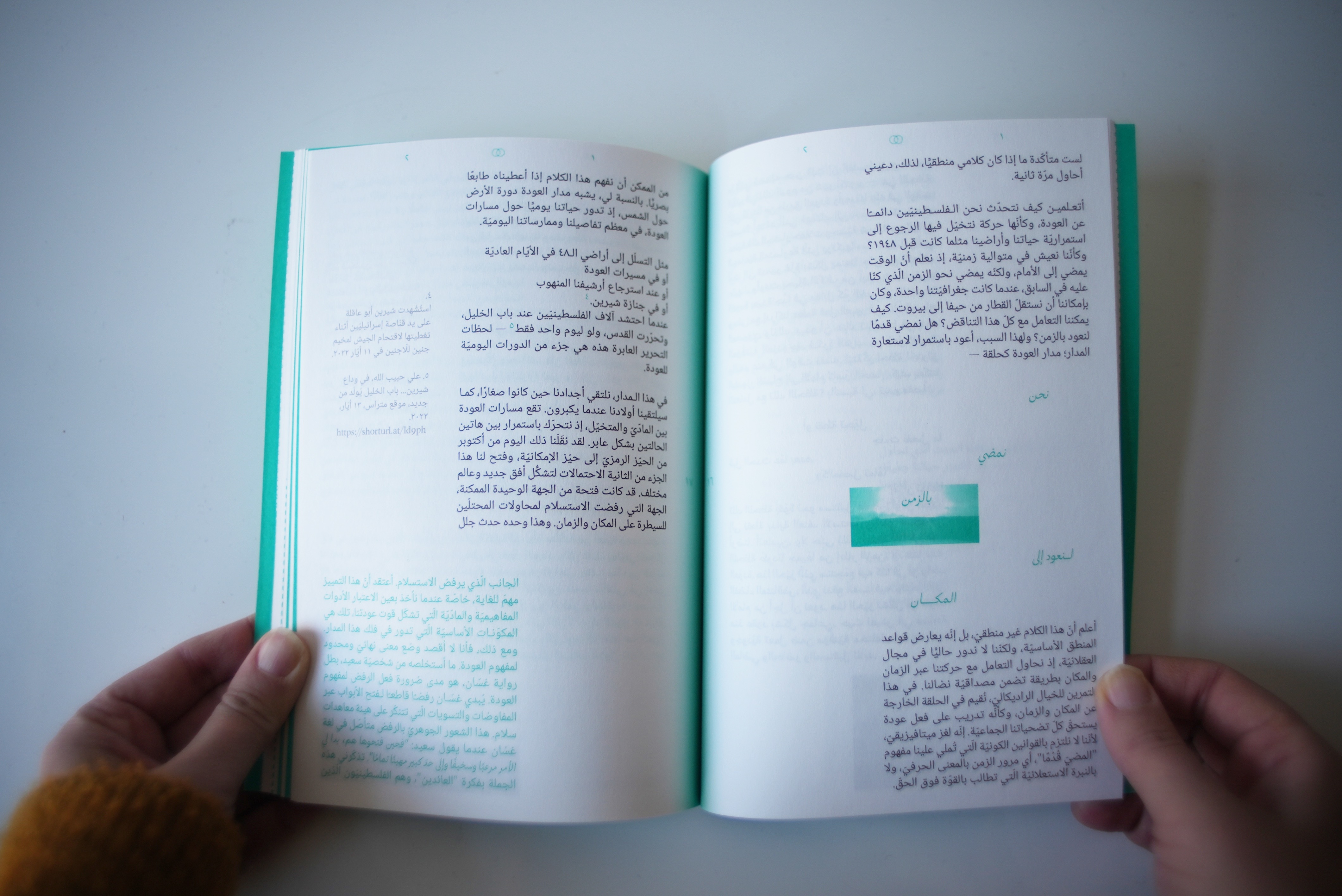

The light through the shards
من تلك الشذرات انبثق الفجر
This text is a conversation replete with broken edges and fragmentations, jagged in its attempt to grapple with insurmountable grief and loss. In it is a summoning of our legacies of struggle, as we search for guiding certainties such as that of the sun.
Embodied in this rehearsal is a sensorial envisioning of an orbit of return, entangled with refusal, memory, and grief, and ruptured by the inconceivable violence of annihilation of our people in Gaza.
يتخذ النص الحوار شكلا ومضمونا لنفسه. ويعترف ضمنيا بعدم قدرته على التكوّن كصياغة متجانسة وواضحة المعايير، كيف لا وهو نتاج واقع مثقل بالأسى والفقد. يستحضر المعاني من الإرث الثوريّ، لعلها تكون الدليل نحو يقين الشمس.
يتجسد النص كمحاولة أو تمرين حسيّ لتصور العودة على هيئة مدار. حركة دائمة تتداخل من خلالها الأزمنة ومفاهيم مثل الرفض والذاكرة والأسى. ولكن سرعان ما تعجز المخيلة أمام واقع الإبادة بكل ما يحمله من ممارسات وحشية ضد أهلنا في قطاع غزة.
Alia Al-Sabi and Amany Khalifa
Alia Al-Sabi is a writer and researcher based in Brooklyn, New York. She is currently a PhD Candidate in the Performance Studies department at NYU, where she is researching prison literatures in various archives in Palestine. Her research focus considers theories of movement and subversion within logics of surveillance and confinement by examining the textual practices produced within carceral structures.
Amany Khalifa is a doctoral student in the Department of Anthropology at Columbia University. Amany is interested in studying social movements as sites of Refusal in Occupied Palestine. Her research explores how political collectivity reconfigures the present and aspires to reshape the future.
علياء السبع وأماني خليفة
علياء السبع كاتبة وباحثة مقيمة في بروكلين، نيويورك، وهي حاليا طالبة دكتوراه في قسم الدراسات الأدائية في جامعة نيويورك، حيث تقوم بالبحث في أدب السجون في أرشيفات مختلفة في فلسطين. يركز بحثها على نظريات الحركة ضمن منطق المراقبة والتضييق من خلال قراءة الممارسات النصية المنتجة داخل منظومة السجن.
أماني خليفة، طالبة دكتوراة في قسم الأنثروبولجيا في جامعة كولومبيا (نيويورك). مهتمة بدراسة الحراكات الاجتماعية في فلسطين كمواقع لممارسة سياسات الرفض. من خلال هذه القراءة تسعى لفهم التصورات والتشكلات السياسية الجمعية لهذه الحراكات من خلال ممارستها اليومية وتصوراتها عن المستقبل.
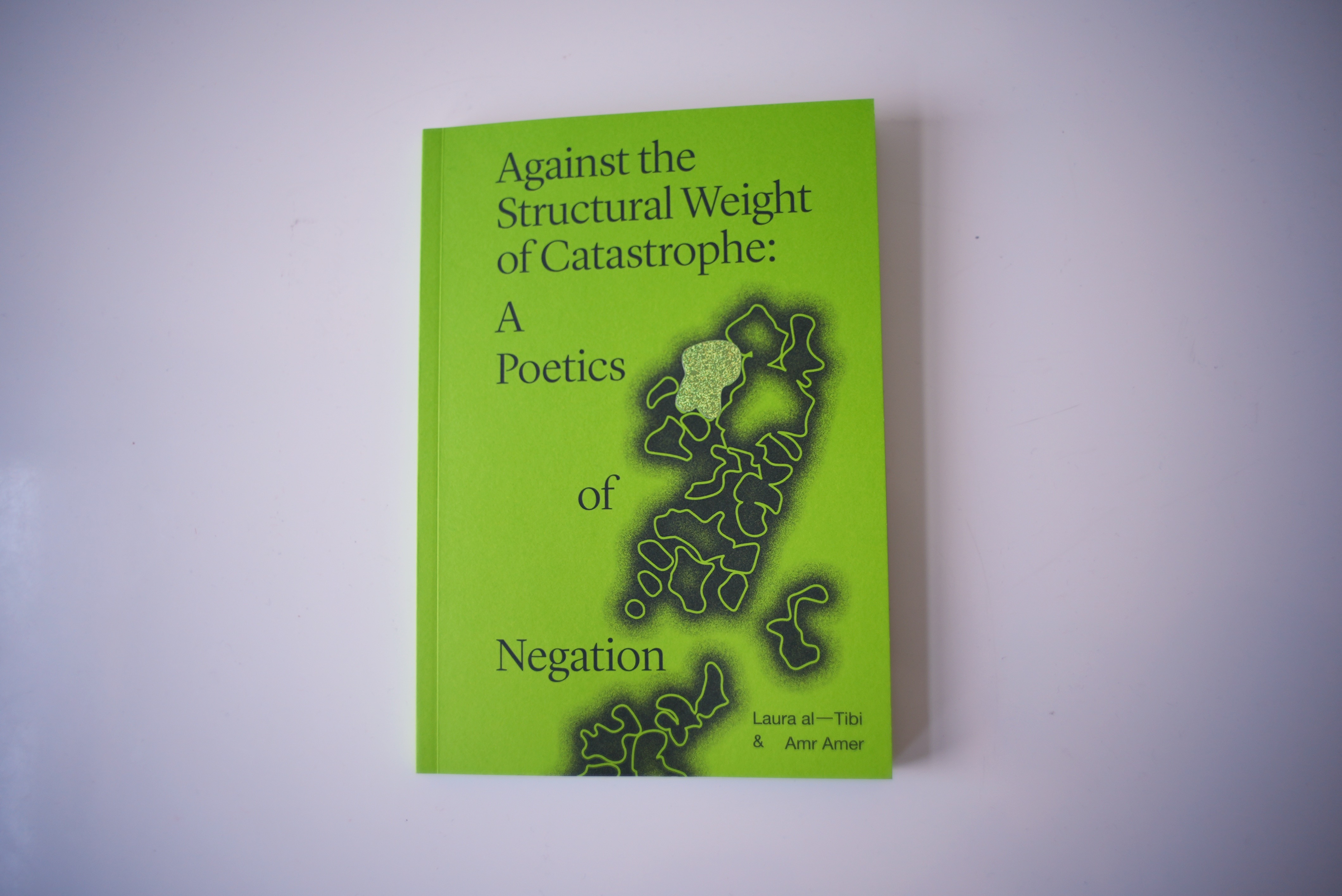
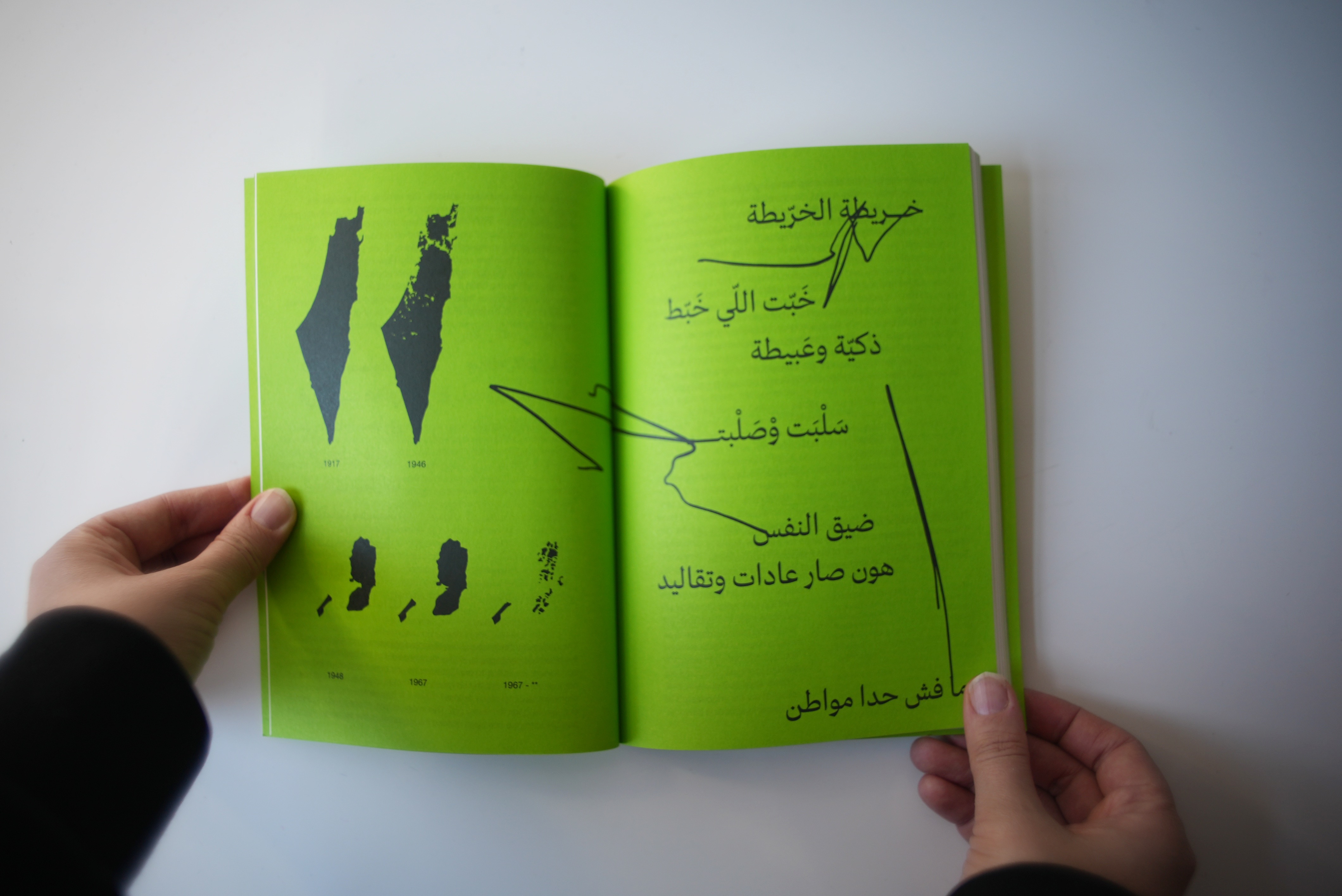
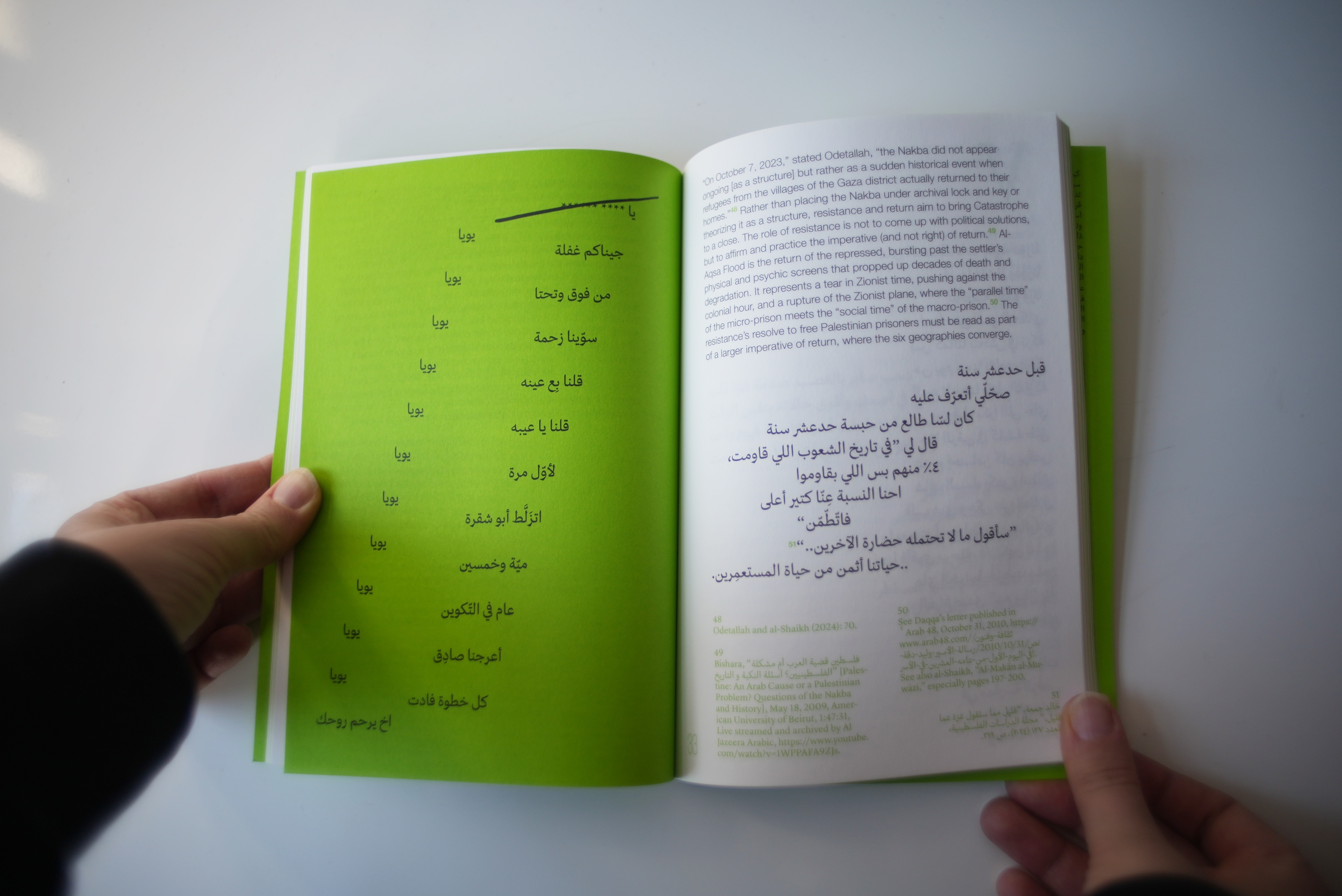
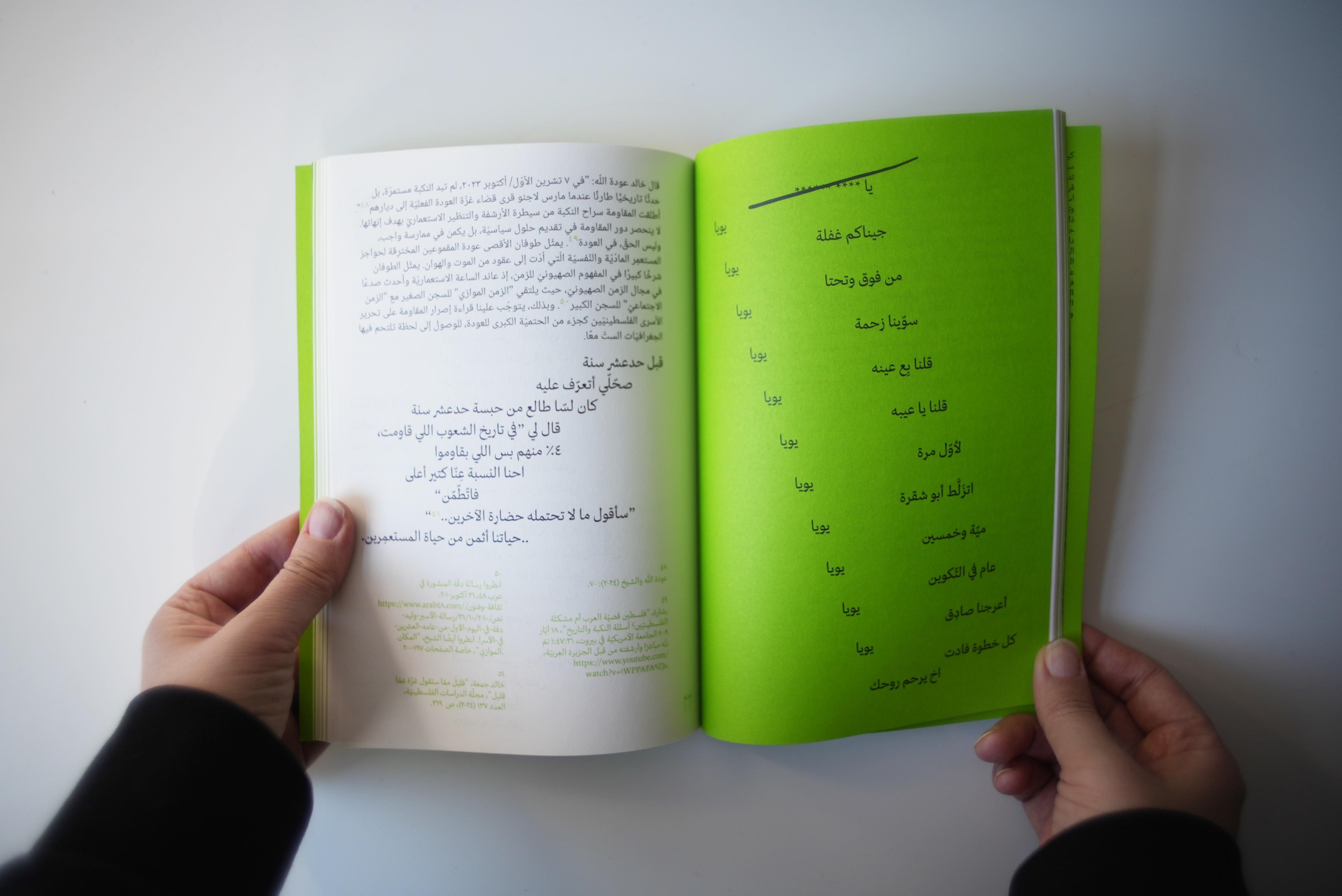
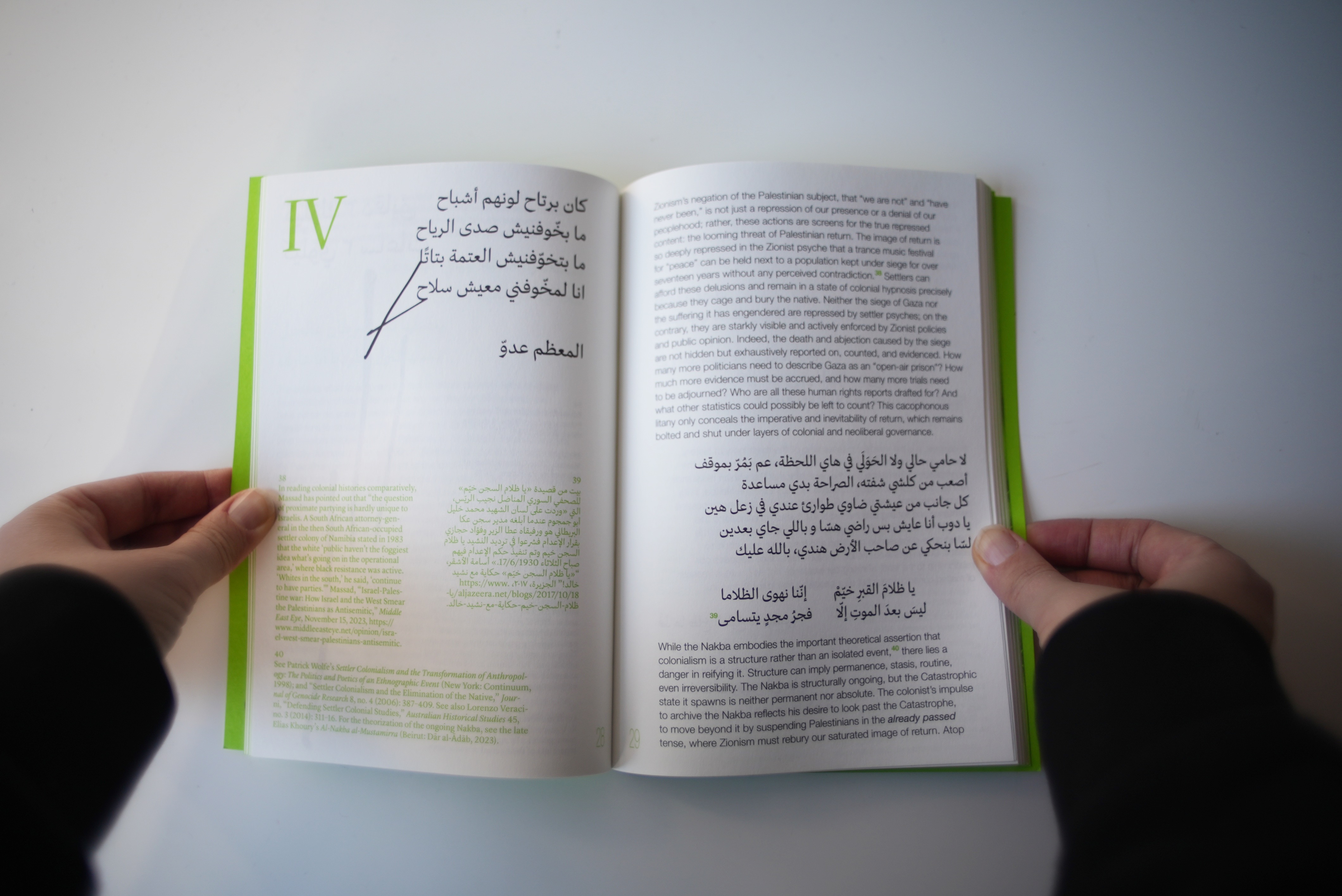
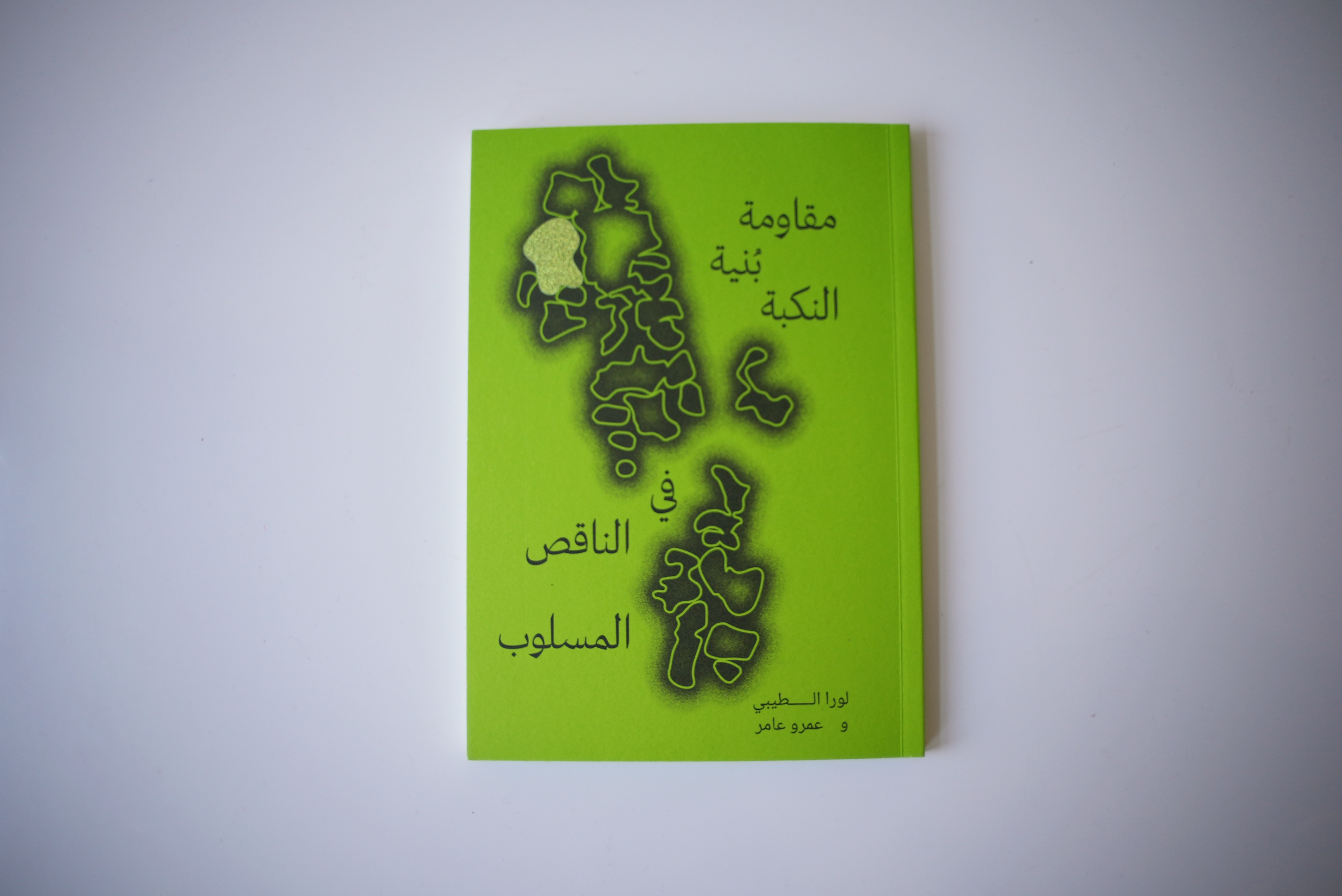
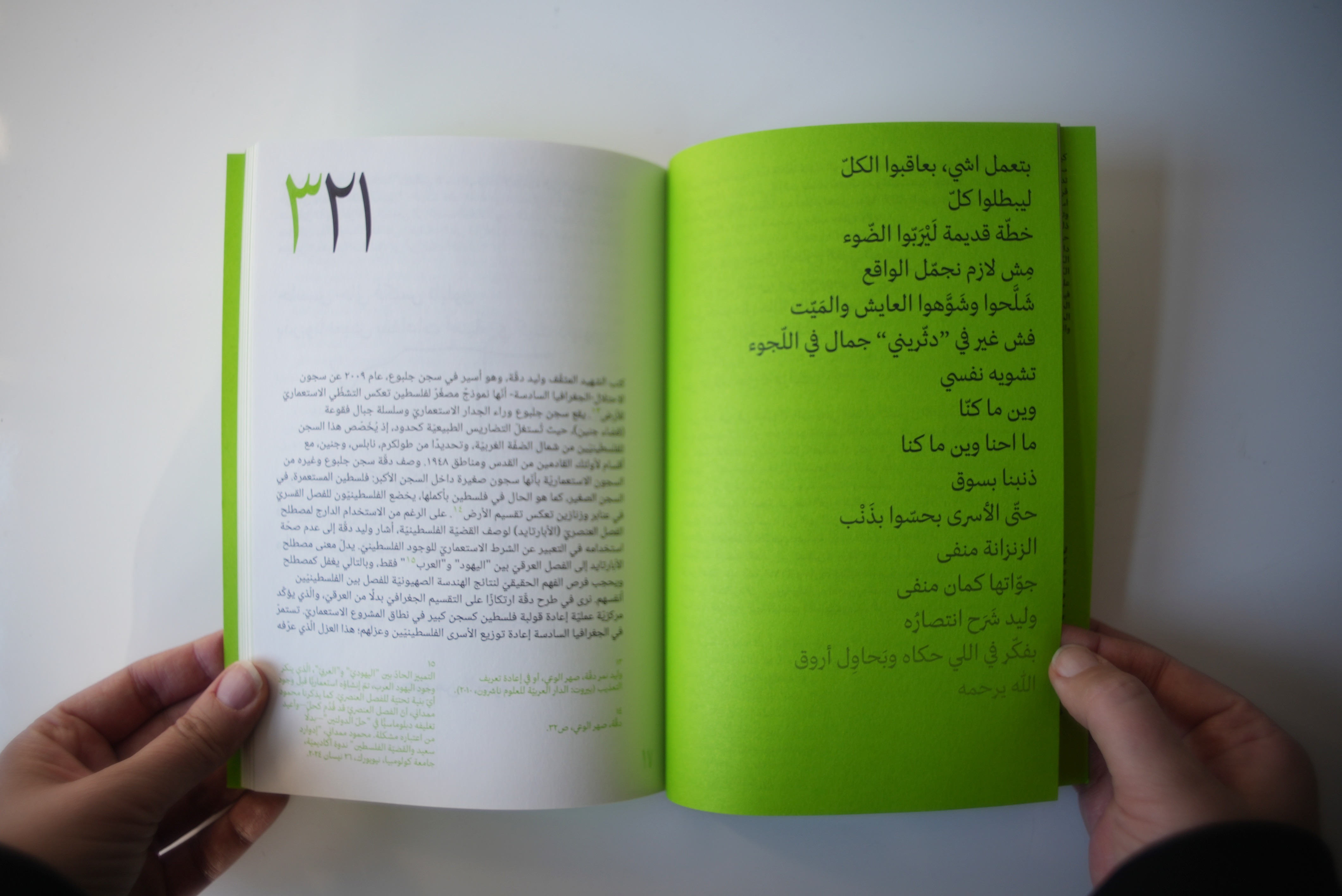
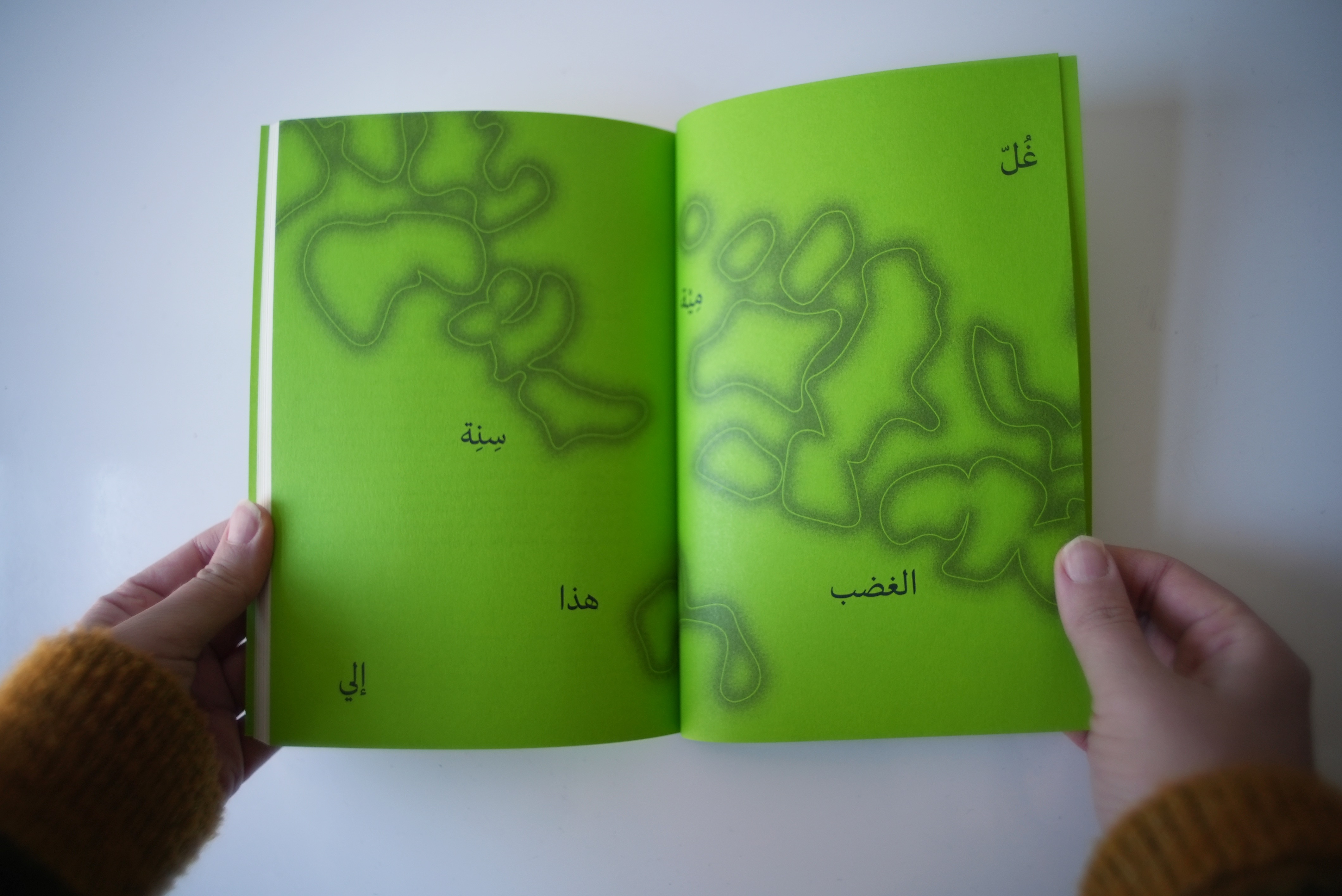
Against the Structural Weight of Catastrophe: A Poetics of Negation
مقاومة وطأة النكبة المستمرة في الناقص المسلوب
What form does the enormity of the Palestinian Catastrophe take, and by which political grammars is its ongoing condition disrupted and contested? Combining materialist critique with poetic interjections, the authors propose reading the Nakba neither as an isolated event nor a reified structure, but as a series of violent negations running parallel to the catalytic force of resistance. In doing so, they redirect focus from overdetermined theorizations of colonial violence to generative practices of refusal, cautioning against the structural heft and imposed permanence of settler-colonialism. As Palestinians have repeatedly shown, the colonial limit is not impenetrable. The booklet also critically engages with iterations of Palestine’s vanishing map, commonly circulated as a convenient summary of dispossession. These cartographic representations are reinterpreted as a negative image that comes into focus with each act of resistance, gradually processing as land and self are restored.
كيف تتجلى فداحة النكبة الفلسطينية، ووفقًا لأي أنساق سياسية وشعبية يتم مقاومة حالتها المستمرة؟ من خلال تداخلات شعرية وتحليلات مادية تاريخية، يقترح المؤلفان قراءة النكبة ليس كحدث ماضٍ منفصل عن الحاضر، ولا كبنية استعمارية متصلبة وأبدية، بل كحالة استئصال ومحو تنبثق وتزداد قوةً وتجدداً من ديمومة المقاومة الفلسطينية. مع ذلك، يحذّر النص من وطأة النظريات البنيوية حول الاستعمار، حيث قد تؤدي إلى تكلّس وترسيخ الاستعمار الاستيطاني كأمر دائم لا رجعة فيه. كما أظهر الشعب الفلسطيني مراراً أن الكيان الاستعماري قابل للاختراق. علاوة على ذلك، يتناول الكتيّب بشكل نقدي خريطة فلسطين المتلاشية التي تتداول على نطاق واسع كملخّص يختزل حالات السلب والتهجير. فيعيد المؤلفان تفسير هذه التمثيلات الكارتوغرافية (الرسم الخرائطي) كصورة سالبة تتضح وتتبلور مع ممارسات المقاومة بجميع أشكالها، مما يسهم في استعادة كافة الأراضي والعودة إليها.
Laura al-Tibi and Amr Amer
Laura al-Tibi is a Palestinian writer and PhD student at Columbia University, specializing in the visual and literary histories of Palestine. Her research delves into the social and political dynamics of Palestinian photography before 1948, along with its aftermath of material devastation and historical erasure.
Amr Amer is a Palestinian musician who has been releasing music under the alias "Haykal" since 2012. His writing navigates between political and cultural themes, intertwined with personal reflections. At times, he strips away lyrics entirely, letting the rhythm and beats take center stage. He has collaborated with various artists across Palestine and the Arab world, including Makimakkuk, Muqata’a, Julmud, and El Rass. To date, he has released four EPs and is currently working on his first full-length album.
لورا الطيبي وعمرو عامر
لورا الطيبي كاتبة وطالبة دكتوراه فلسطينية في جامعة كولومبيا، تدرس تاريخ الفن البصريّ والأدبيّ الفلسطيني. تتمحور أبحاثها حول فهم التيّارات الاجتماعيّة والسياسيّة في التصوير الفوتوغرافيّ، خاصةً في الفترة التي سبقت عام ١٩٤٨ وما تلاها من تدمير ماديّ ومحو تاريخيّ. كما توظف في كتابتها مقاربات أدبيّة وشفويّة ترتكز على الخيال والذاكرة لاستحضار واسترجاع تاريخ خارج نطاق المعايير الاستعماريّة.
عمرو عامر موسيقي فلسطيني بدأ مسيرته الفنية في عام ٢٠١٢ تحت الاسم الحركي "هيكل." يتنوع محتوى نصّه بين نقاشات سياسية وثقافية وتجارب شخصية، وأحياناً يعطي الأولوية للإيقاع الموسيقي بحيث يصبح هو المعنى المراد، ذلك مع تنقل دائم بين المعاني المفهومة والمبهمة. تعاون مع عدد من الفنانين من فلسطين والعالم العربي، منهم ماكي مكّوك، مقاطعة، جلمود، والرّاس. حتى الآن، أصدر أربعة ألبومات قصيرة وهو حالياً يعمل على ألبومه المطوّل الأول.
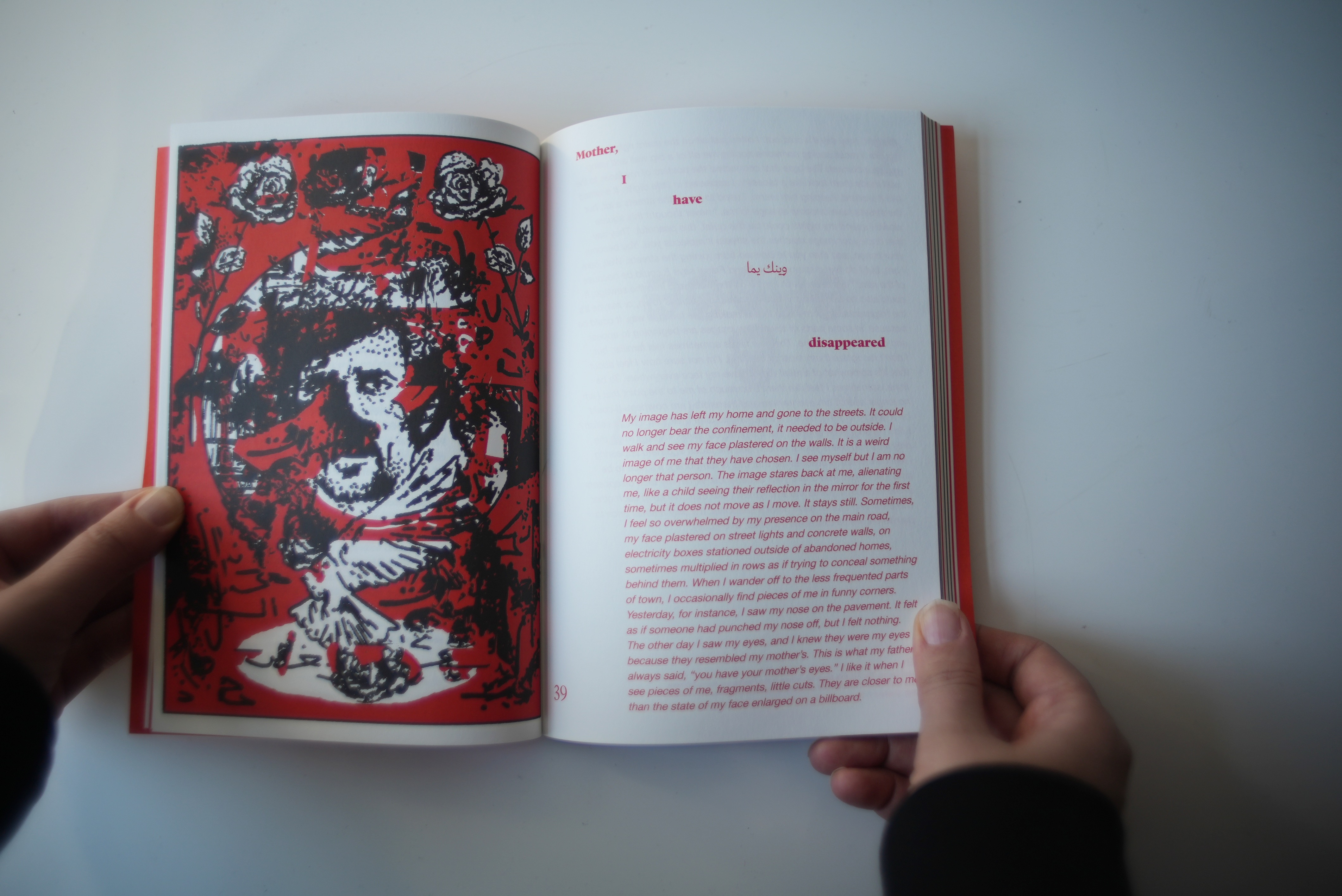

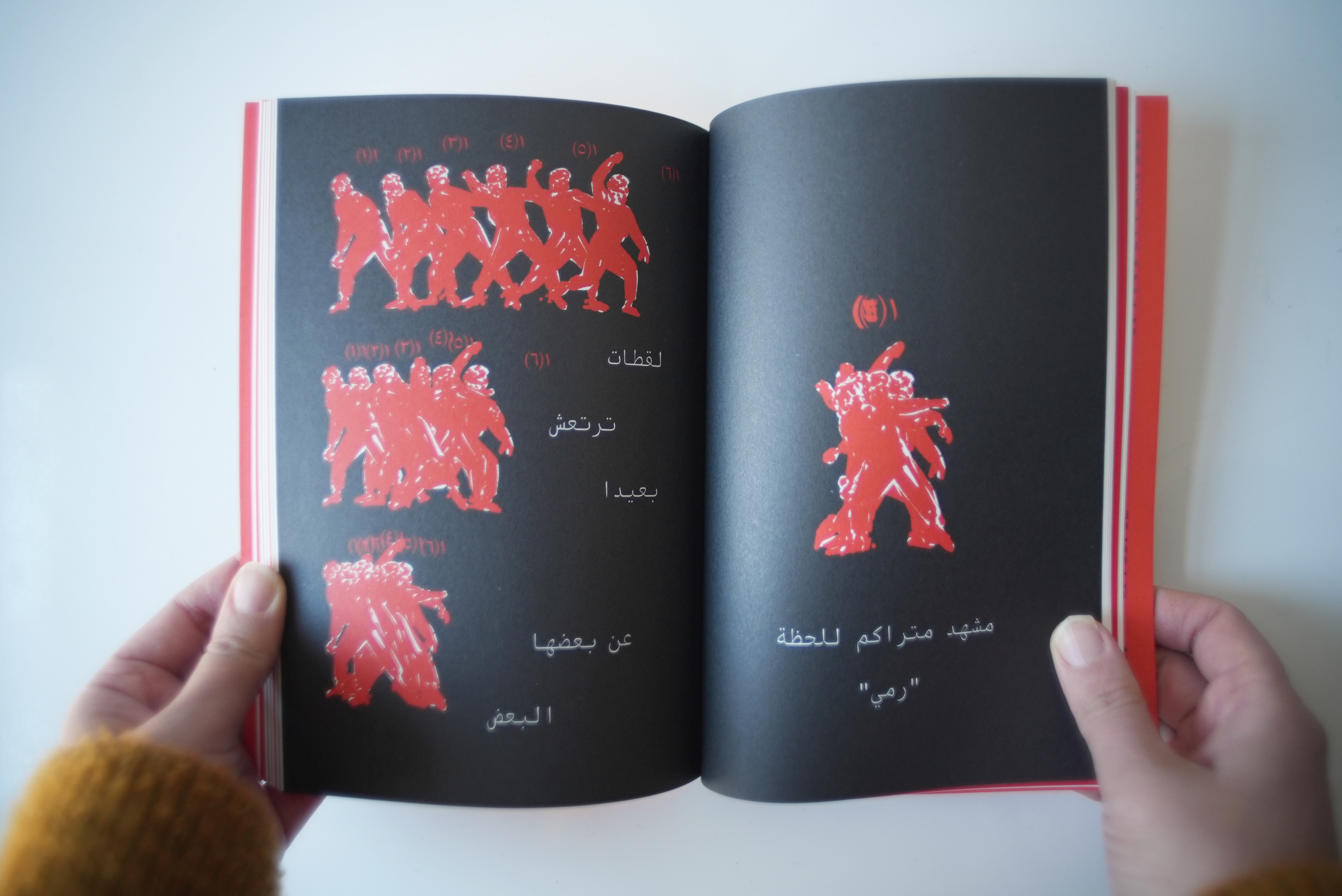
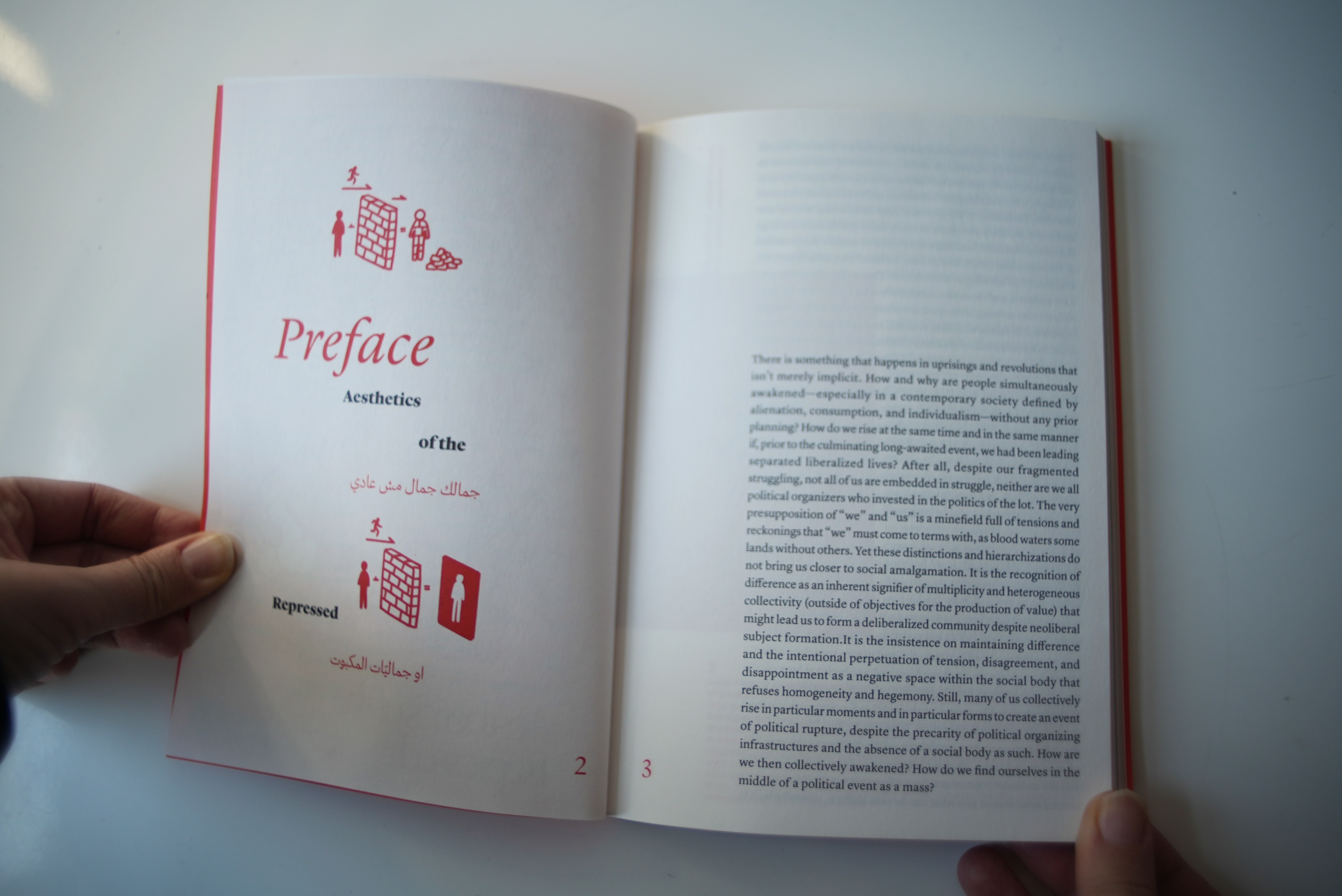
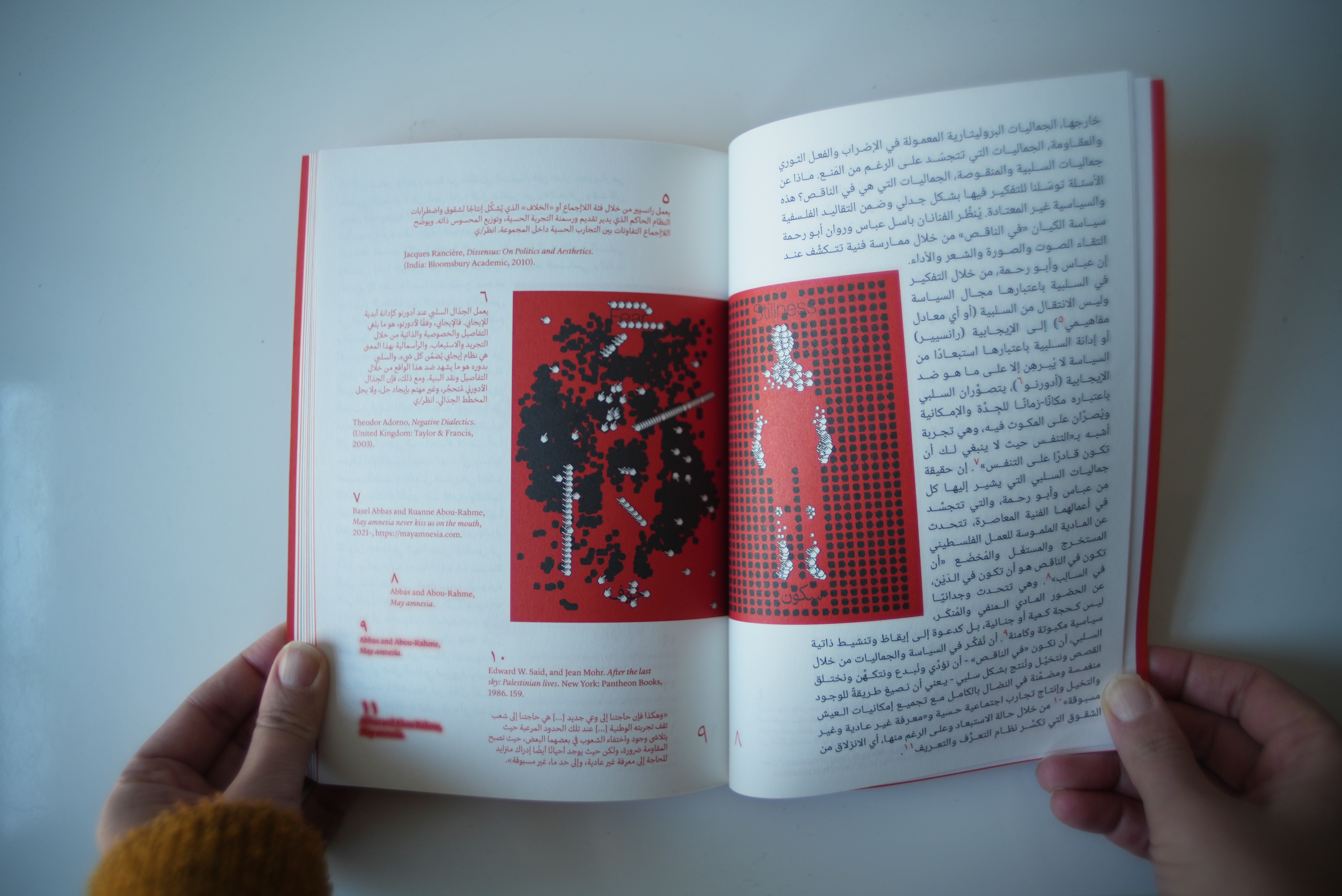
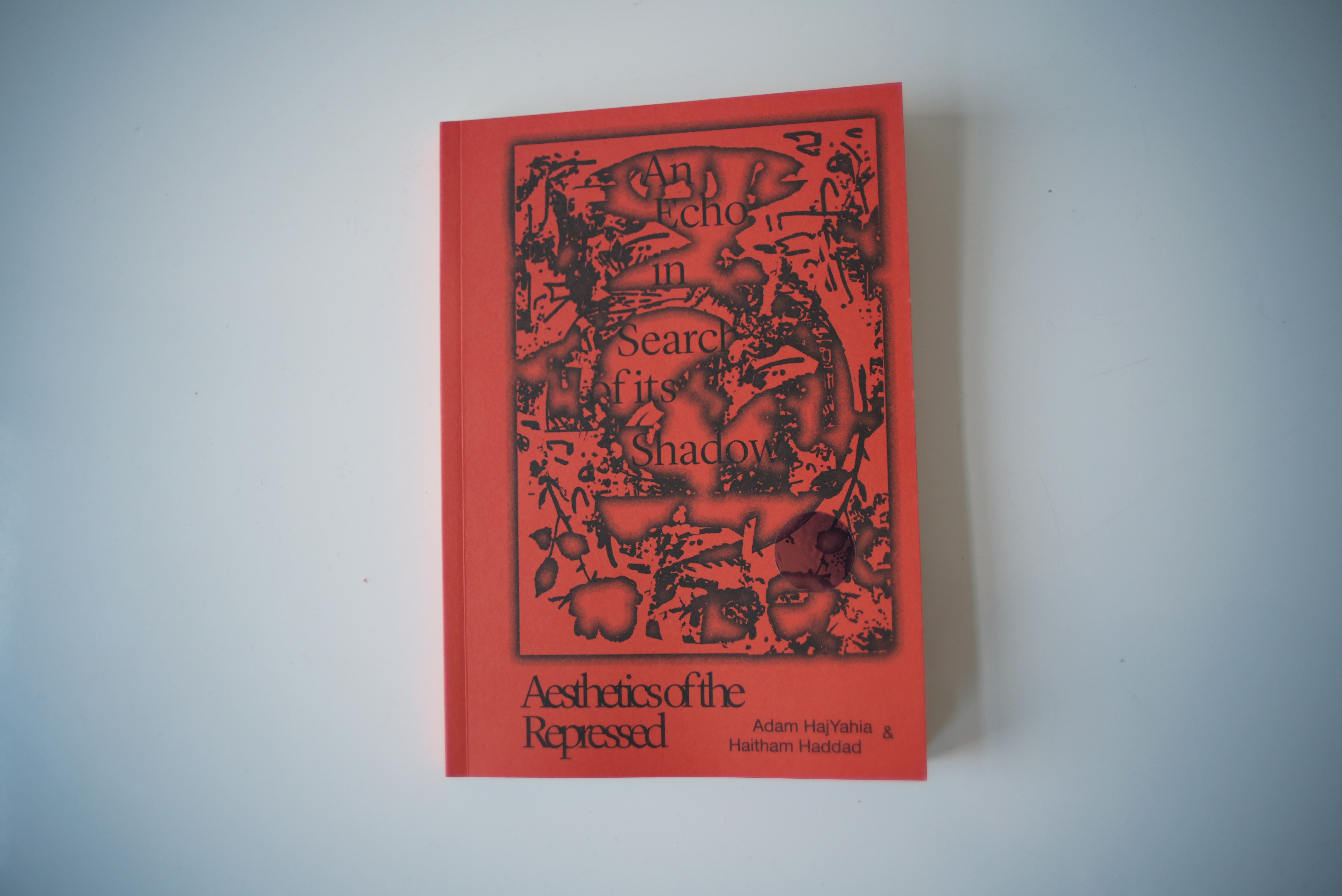
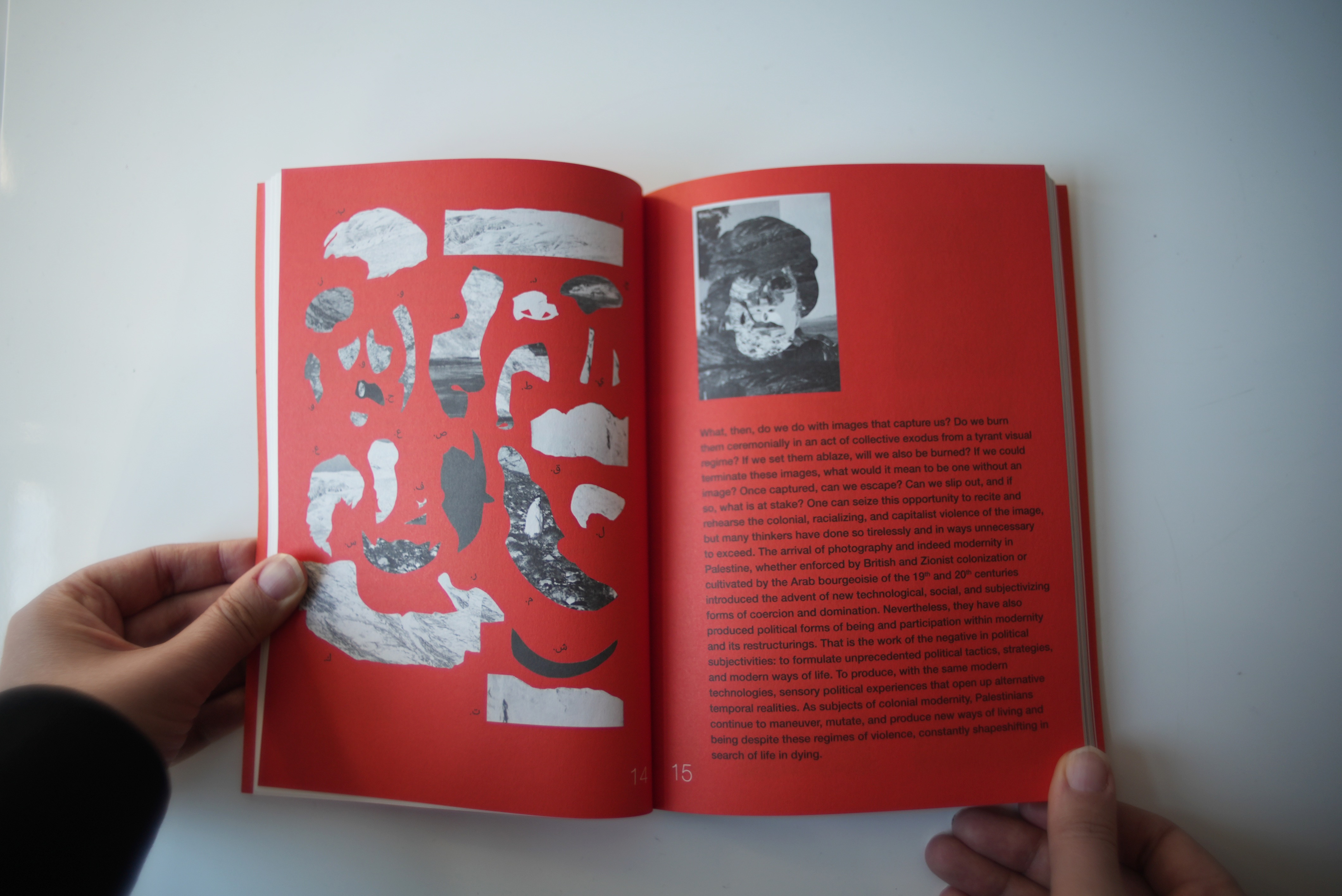
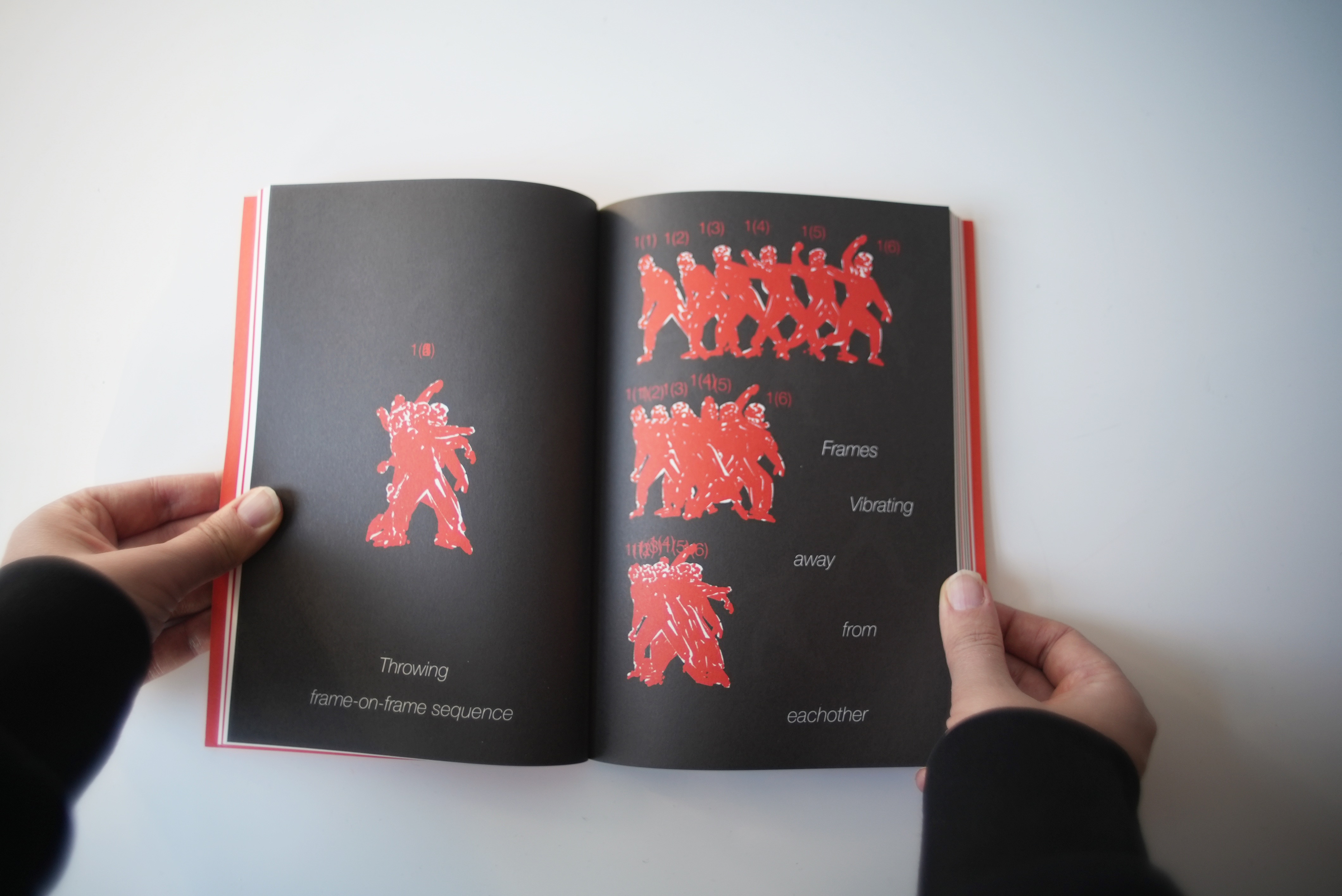

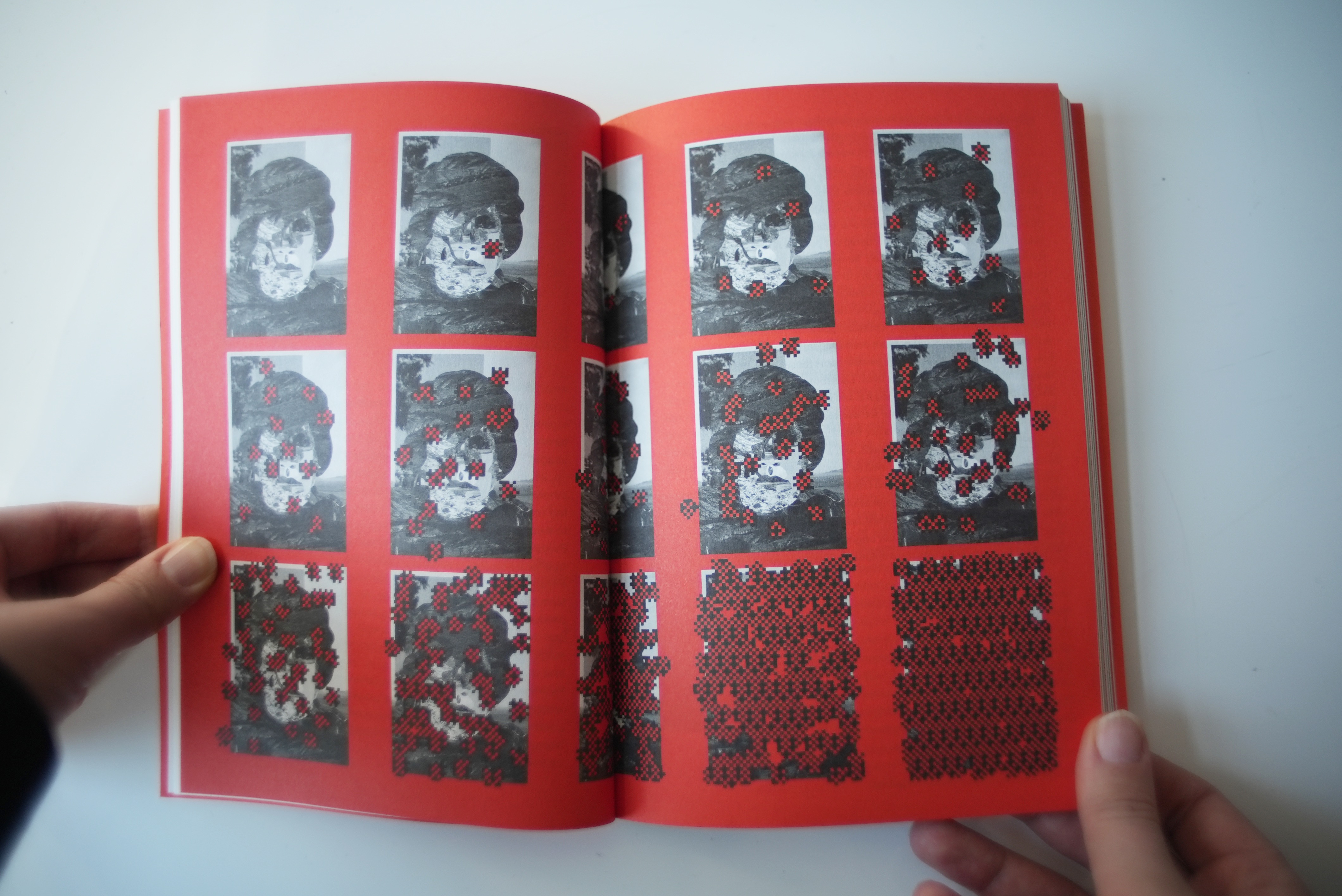

An Echo in Search of its Shadow, Aesthetics of the Repressed
صدى يتوق الى طيفه، جماليات المكبوت
What aesthetic practices have Palestinians been employing throughout their revolutionary anti-colonial tradition, both historically and in contemporary times? How can we read the performative gestures, image-making techniques, and singing replete in Palestine’s streets as ones embedded within a collective psychosocial and material experience and not as arbitrary isolated events? In An Echo in Search of its Shadow, Aesthetics of the Repressed Adam HajYahia and Haitham Haddad formulate an aesthetic theory of revolt by examining anti-colonial praxis. Unfolding through analysis, image-making, and poetics, HajYahia and Haddad assemble a new framework from which to understand dialectics between the visual and the audial, body and soul, form and content. Instead of the usual approach to aesthetics and politics where aesthetics are practiced and politics are thought, An Echo in Search of Its Shadow urges us to practice politics and think aesthetics.
ما هي الممارسات الجماليّة التي يستخدمها الفلسطينيون في نضالاتهم وثوراتهم المناهضة للاستعمار سواء تاريخياً أو في الزمن المعاصر؟ كيف يمكننا قراءة الإيماءات الأدائية، وممارسات صناعة الصور، والغناء الذي يملأ شوارع فلسطين كظواهر مغروسة في تجربة جماعية نفسية وملموسة وليس كأحداث عشوائية منفصلة؟ في "صدى يتوق إلى طيفه، جماليّات المكبوت" يصوغ آدم حاج يحيى وهيثم حدّاد نظرية جماليّة متمردة من خلال دراسة ممارسات النضال المناهض للاستعمار. عبر التحليل وصناعة الصور والأدب يكوّن حاج يحيى وحداد إطار نظري جديد لفهم الجدلية بين ما هو بصري وما هو مسموع، بين الجسد والروح، وبين الشكل والمحتوى. عوضاً عن النهج المعتاد للتعامل مع الجماليات والسياسة، حيث الجماليات تُمارس والسياسة تنتج عن عملية تفكير، يدفعنا "صدى يتوق إلى طيفه، جماليّات المكبوت" للممارسة السياسيّة والتفكير الجمالي.
Adam HajYahia and Haitham Haddad
Adam HajYahia is invested in the relationships between aesthetics and politics; capitalism and desire; negative speculation and contemporary art. Through his work as a writer and curator, he examines how practices of image-making, performance, poetry, and sound reflect on and affect revolutions to erupt, be suspended, and/or terminate. He is interested in how psychic desire is at once captured and unbound by capital and the aesthetic practices that tirelessly attempt to forge a way out.
Haitham Haddad is a visual artist and graphic designer whose work centers on historical and contemporary manifestations of myth and folklore, as well as political tensions between the individual and the collective. He works at the intersection of printmaking, illustration, video, and tattooing, with an ongoing investment to revisit past histories and test how they can reshape the present.
آدم حاج يحيى وهيثم حداد
هيثم حدّاد هو فنان بصري ومصمّم جرافيكي، تمتاز ممارسته الفنيّة باتساع نطاقها، حيث تتجسّد اعماله من خلال وسائط وتقنيّات مختلفة كالطباعة والرسم والفيديو والوشم، وتبحث مواضيع عدة كالتجليّات التاريخيّة والمعاصرة للفولكلور والأسطورة، والتوترات السياسيّة والرأسماليّة ما بين الفرد والمجموعة. يسعى حدّاد من خلال ممارسته المتنوعة أن يفحص كيف يمكن للماضي ان يعيد صياغة الحاضر.
تُثير آدم حاج يحيى العلاقات ما بين السياسة والجماليّات، الرغبة النفسيّة ورأس المال، والمضاربة الاقتصاديّة السلبيّة في مجال الفن المعاصر. من خلال عمله ككاتب وقيّم فنّي، يختبر الحاج يحيى كيف تؤثر ممارسات صنع الصور وألأداء وانتاج الصوت والشعر على الثورات السياسيّة والاجتماعيّة ان كان من خلال تحفيز اندلاعها، او تعليقها بالزمن او انهاءها وفشلها. يبحث دوماً عن الممارسات الفنّية والاجتماعيّة التي تسعى بلا كلل أن تخلق مخرجاً من الواقع الحالي.

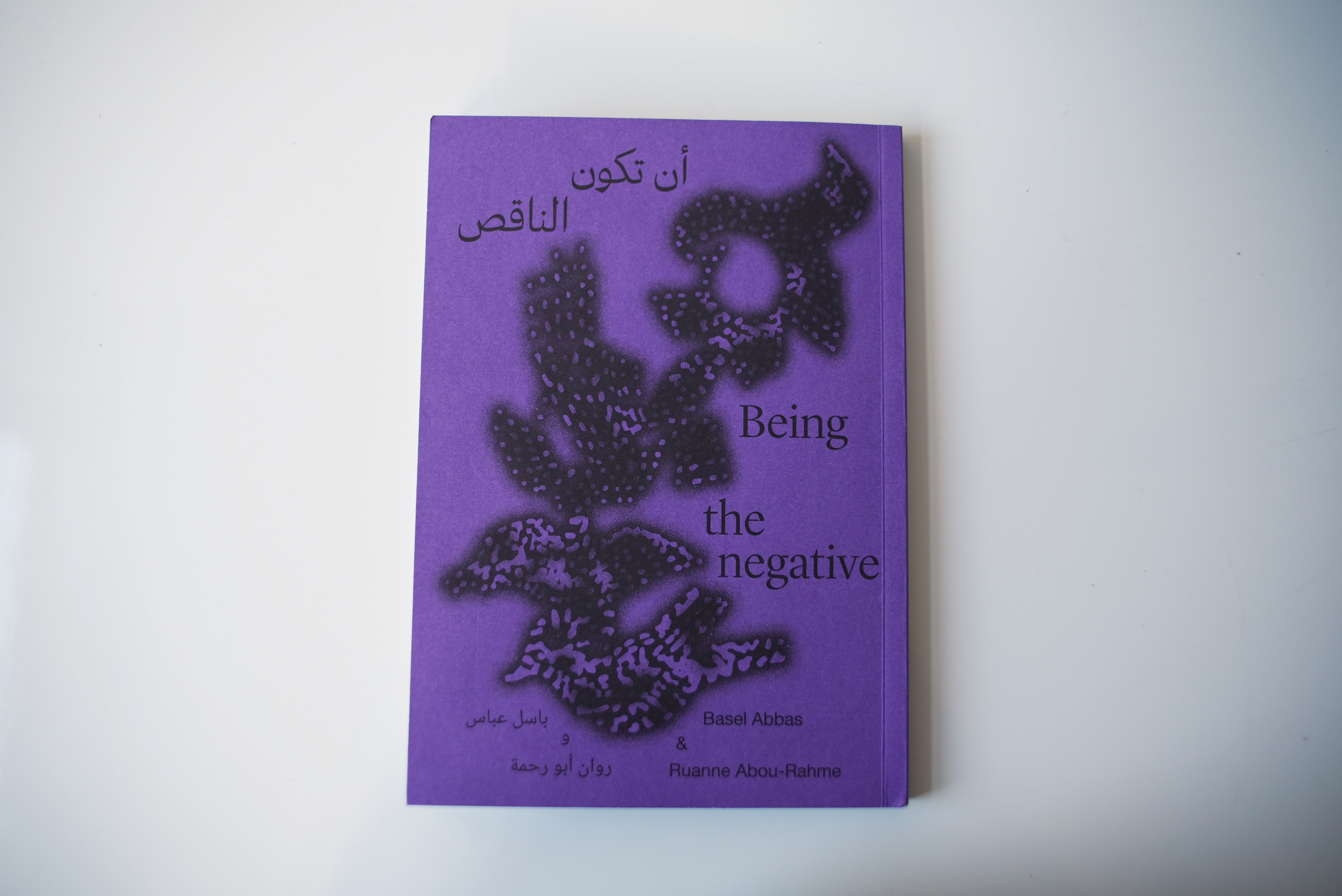



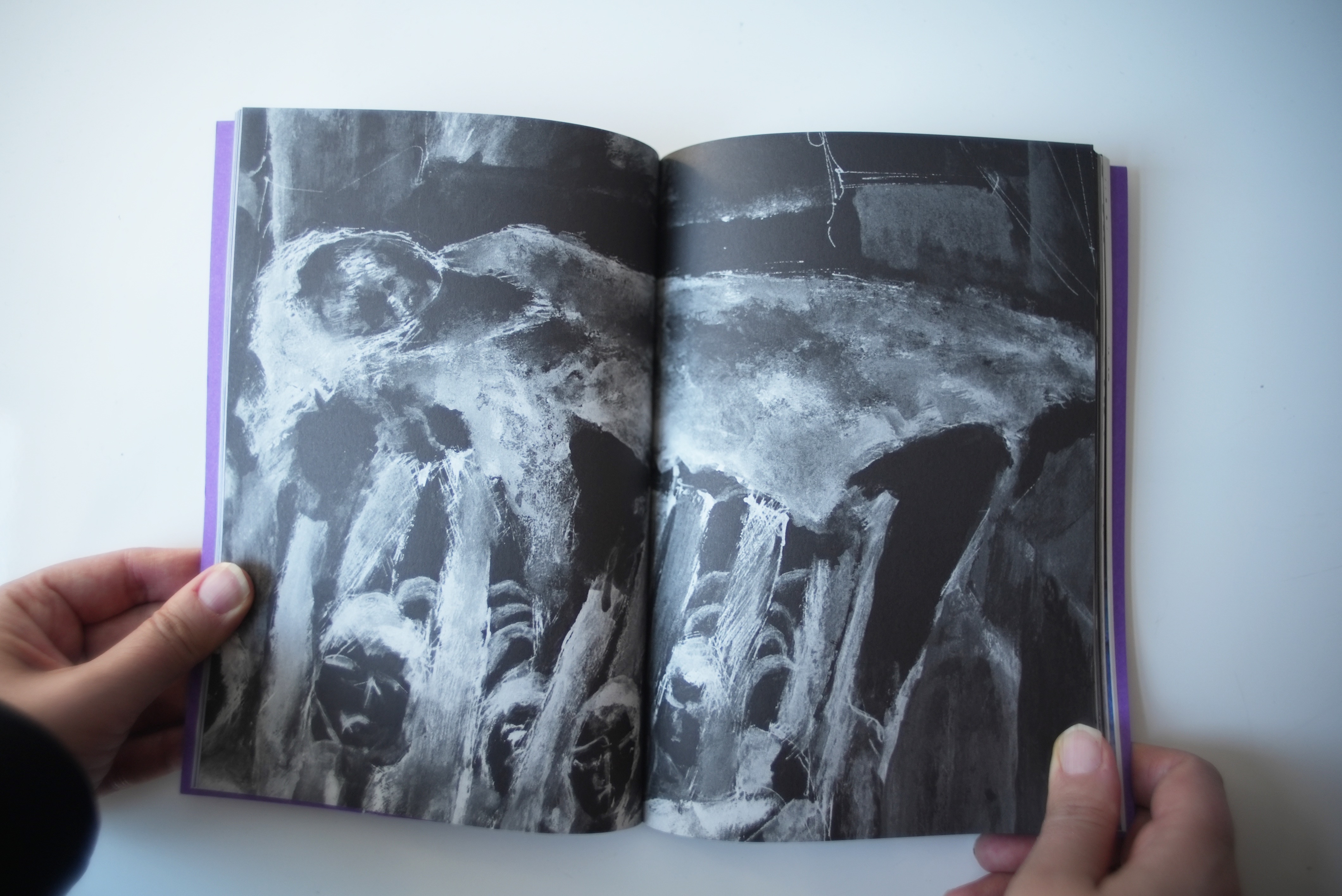


Being the negative
أن تكون الناقص
Basel Abbas and Ruanne Abou-Rahme have been developing a practice that examines the idea of ‘being in the negative’ as a principle form of ongoing dispossession, and the call to ‘becoming the negative’ as a movement towards becoming unbound from colonial capture. First appearing in their work in 2019 and emerging from witnessing the Great March of Return in Gaza and its aftereffects in the Palestinian imaginary, the work is indebted to the multiple forms of resistance and refusal practiced in Palestine every day. In their multidisciplinary practice the space of the negative continues to occupy a principal dimension, asking what it means to resist in impossible conditions, to refuse the terrain as given: What does it mean to breathe where one should not breathe? To emerge from the site of exclusion and extraction unbound? Unfolding through poetics of abstraction and repetition, Being the negative offers Abbas and Abou-Rahme’s first theoretical and discursive consolidation of being in, becoming, and embracing the negative.
Accompanying their text are images from their works, and drawings by the late Tawfik Abou-Rahme, Ruanne Abou-Rahme’s father. These materialize an intergenerational conversation of perseverance and resistance, as with each piece of paper an aesthetic of indebtedness and inheritance is written and rewritten.
Accompanying their text are images from their works, and drawings by the late Tawfik Abou-Rahme, Ruanne Abou-Rahme’s father. These materialize an intergenerational conversation of perseverance and resistance, as with each piece of paper an aesthetic of indebtedness and inheritance is written and rewritten.
يعمل باسل عباس وروان أبو رحمة على تطوير مشروع عمل يبحث فكرة ' أن نكون في الناقص'، كشكل أساسي للتجريد المتواصل، والدعوة لأن 'نصبح الناقص'، كحركةٍ نحو الانعتاق من الأسر الاستعماري. ظهرت الفكرة للمرّة الأولى في عملهما سنة ٢٠١٩، منطلقَةً من مواكبة/ مشاهدة مسيرات العودة في غزة وتأثيراتها اللاحقة على المخيّلة الفلسطينيّة، فيدين العمل بالفضل إلى كافة أشكال المقاومة والرفض التي تجري كلّ يومٍ في فلسطين. يشكّلُ "الناقص" بعداً رئيسياًّ في عملهما متعدّد التخصصات بشكل دائم، بحيث أنهما يتساءلان عن معنى المقاومة في ظروف مستحيلة، وأن ترفض قبول المشهد كما هو: ما معنى أن تتنفَّسَ حيث لا ينبغي لك أن تتنفَّس؟ أن تنبثقَ من موقع الإقصاء والطرد حراًّ؟ يتجلّى مفهوم "ان تكون الناقص" من خلال شاعريّة التجريد والتكرار، فيقدّمَ أوَّلَ تجسيدٍ نظري واستطرادي يقوم به عباس وأبو رحمة لمعنى أن تكون، وأن تصبح وأن تعتنقَ الناقص.
ترافقُ نصُّهم صوراً لأعمالهم، ورسومات للراحل توفيق أبو رحمة، والد روان أبو رحمة. تجسّدُ هذه الرسوم حواراً بين الأجيال عن الصمود والمقاومة، حيث مع كلِّ صفحة، تجري كتابةُ وإعادةُ كتابةِ جماليّةِ الفضلِ والإرث.
ترافقُ نصُّهم صوراً لأعمالهم، ورسومات للراحل توفيق أبو رحمة، والد روان أبو رحمة. تجسّدُ هذه الرسوم حواراً بين الأجيال عن الصمود والمقاومة، حيث مع كلِّ صفحة، تجري كتابةُ وإعادةُ كتابةِ جماليّةِ الفضلِ والإرث.
Basel Abbas and Ruanne Abou-Rahme
Basel Abbas and Ruanne Abou-Rahme have been developing a body of work that questions the suspension of the present and searches for ways in which an altogether different imaginary and language can emerge that is not bound within colonial/capitalist narrative and discourse. In their projects, they find themselves excavating, activating, and inventing incidental narratives, figures, gestures, and sites as material for re-imagining the possibilities of the present. Often reflecting on ideas of non-linearity in the form of returns, amnesia, and deja vu,
and unfolding the slippages between actuality and projection (fiction, myth, wish), what is and what could be.
تغور أعمال باسل عباس وروان أبو رحمة في التقاطعات بين الأدائيّة، والمخيال السياسي، والجسد والعالم الافتراضي. تطرحُ أعمالُهما أسئلةً حول هذا الجمود في الحاضر، وتبحثُ عن سبلٍ يمكن من خلالها انبثاق مخيّلة ولغة مختلفَتين لا تحدّهما السرديّة والخطاب الاستعماري/الرأسمالي. في أعمالهما، نجدهما يعملان على استكشاف، وتنشيط، وابتكار الروايات، والأشكال، والإيماءات واستخدام الأماكن العَرَضيّة كموادٍّ لإعادةِ تخيّلِ إمكانيّات الحاضر. ثمّة تأمّلٍ في الأفكار التي تدور حول الزمن الغير متوازي في أشكال العودة، وفقدان الذاكرة، والإحساس بأنَّك رأيت هذا من قبل، وفي خضمّ هذه العملية، تتكشّف الانزلاقات بين الحقيقةِ والنبوءة (الأسطورة والخرافة والأمنية)، ما كان وما قد يكون.
and unfolding the slippages between actuality and projection (fiction, myth, wish), what is and what could be.
تغور أعمال باسل عباس وروان أبو رحمة في التقاطعات بين الأدائيّة، والمخيال السياسي، والجسد والعالم الافتراضي. تطرحُ أعمالُهما أسئلةً حول هذا الجمود في الحاضر، وتبحثُ عن سبلٍ يمكن من خلالها انبثاق مخيّلة ولغة مختلفَتين لا تحدّهما السرديّة والخطاب الاستعماري/الرأسمالي. في أعمالهما، نجدهما يعملان على استكشاف، وتنشيط، وابتكار الروايات، والأشكال، والإيماءات واستخدام الأماكن العَرَضيّة كموادٍّ لإعادةِ تخيّلِ إمكانيّات الحاضر. ثمّة تأمّلٍ في الأفكار التي تدور حول الزمن الغير متوازي في أشكال العودة، وفقدان الذاكرة، والإحساس بأنَّك رأيت هذا من قبل، وفي خضمّ هذه العملية، تتكشّف الانزلاقات بين الحقيقةِ والنبوءة (الأسطورة والخرافة والأمنية)، ما كان وما قد يكون.



























